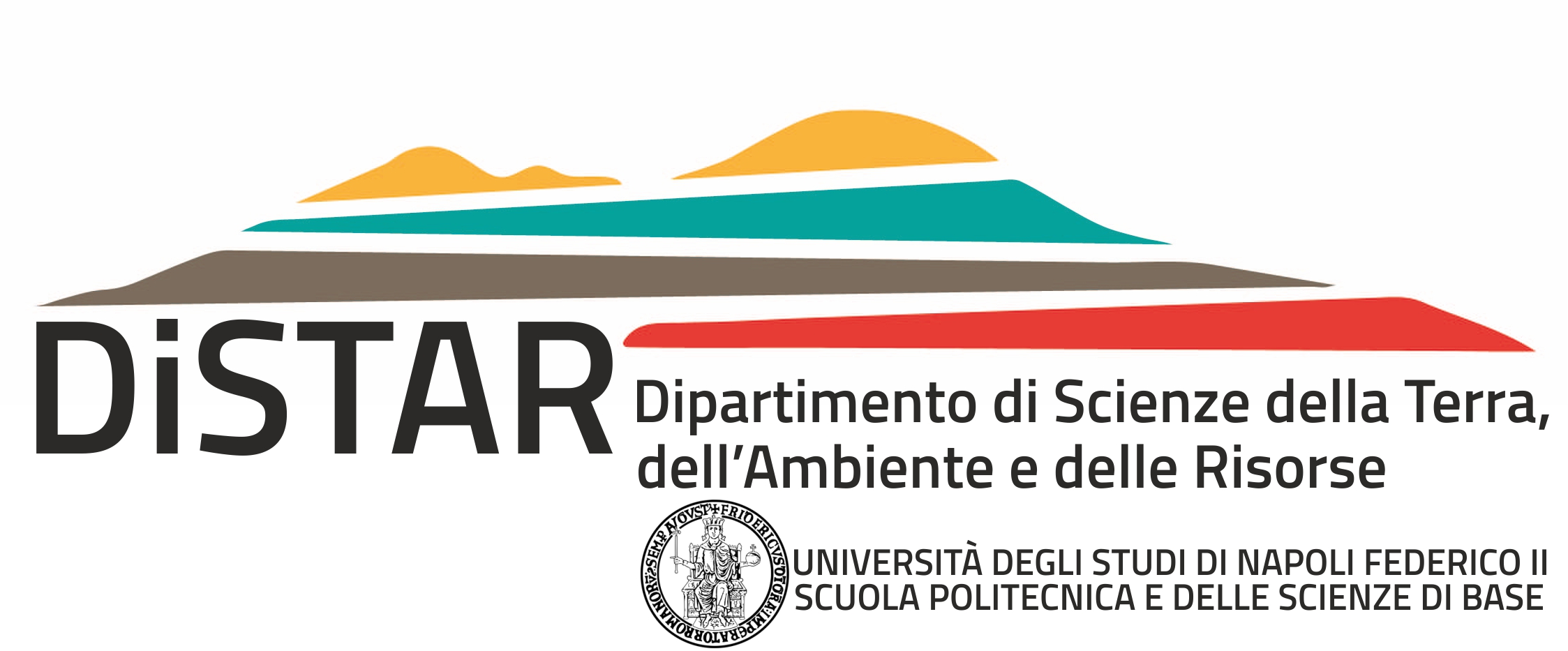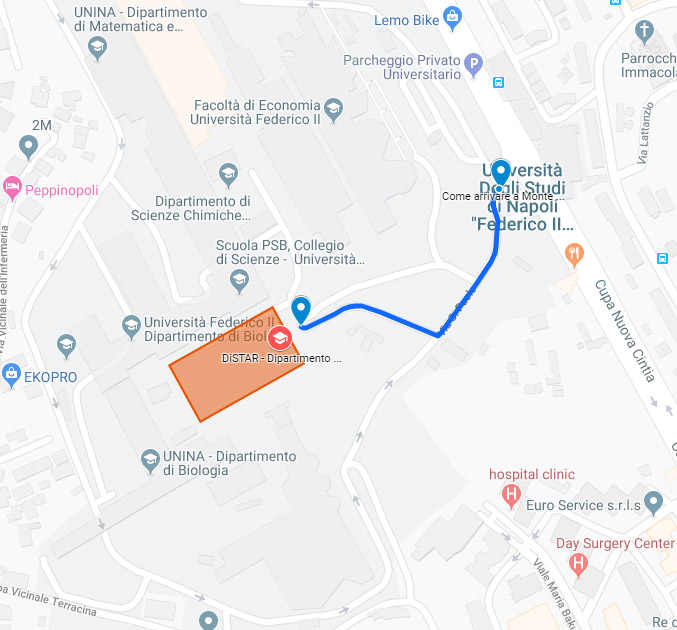Eruption forecasting and volcanic hazard
Staff: Prof. Warner Marzocchi, Prof. Jacopo Selva, Prof. Ester Piegari, Dr. Salvatore Ferrara (studente PhD alla Scuola Superiore Meridionale)
Our research goals are:
- Building/enhancing eruption forecasting and volcanic hazard probabilistic tools for short-term purposes, such as handling volcanic unrest. We mostly focus on Neapolitan volcanoes (Campi Flegrei and Vesuvius), but we are involved also in similar research for other volcanoes.
- Building/enhancing eruption forecasting and volcanic hazard probabilistic tools for long-term purposes, such as land use planning. Although our research is primarily focused on Neapolitan volcanoes, we apply our tools also to other worldwide volcanoes.
- Investigating on how to use monitoring measures for eruption forecasting through conceptual models and experts' elicitation.
- Study of the volume distribution of volcanic eruptions for single volcanoes and for global eruptive activity, and the predictability of the volume for the future eruptions. This issue is probably the most critical in improving eruption forecasting and volcanic hazard.
- Development and analysis of high-resolution earthquake catalogs with Artificial Intelligence in volcanic areas, which is useful for eruption forecasting and seismic risk purposes.
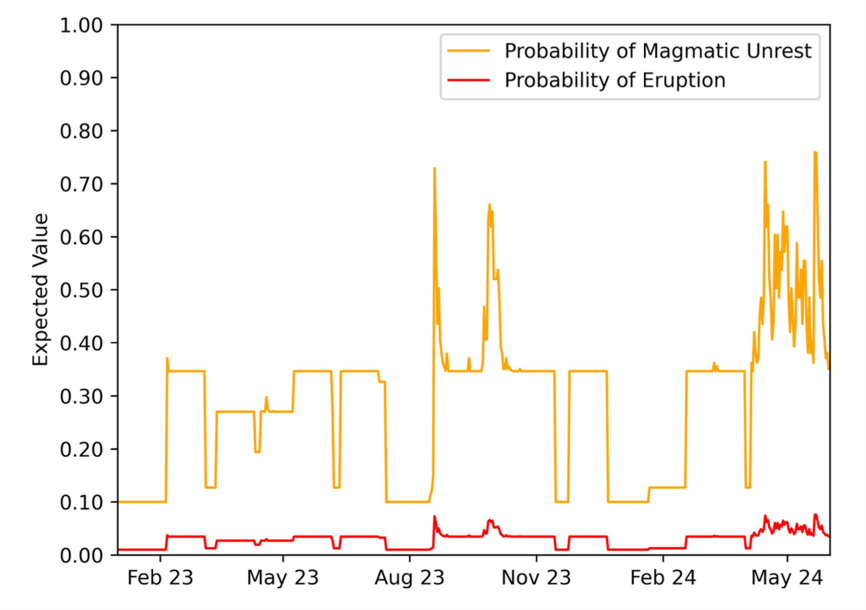
Variation of the expected value of the probability of Magmatic Unrest (orange line) and Eruption within a one-month time window (red line) throughout the entire examined period, according to the VI experts' elicitation at Campi Flegrei.
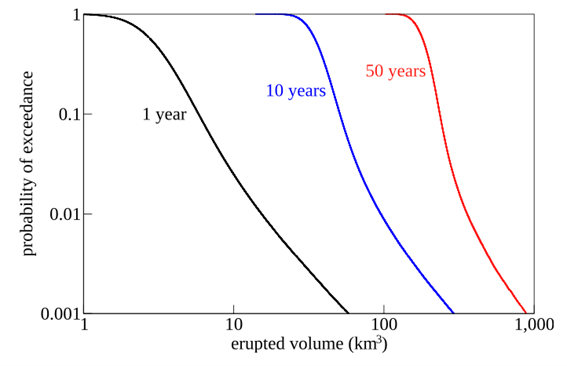
Model forecasts in terms of probability of exceedance for any given volume over time windows of 1, 10, and 50 years, for subaerial global volcanism
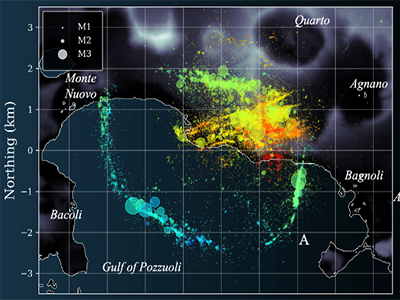
Preliminary high-resolution earthquake catalog for Campi Flegrei 2022-2025. Colors indicate the depth: red dots are the most superficial, blue dots are the deepest
Active collaboration
Istituto Nazionale di Geofisica e Vulcanologia,
U.S. Geological Survey,
GNS New Zealand,
University of Bari, Italy
Massey University, New Zealand,
ETH Zurich,
Stanford University
